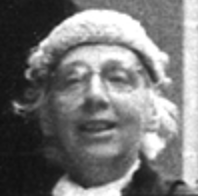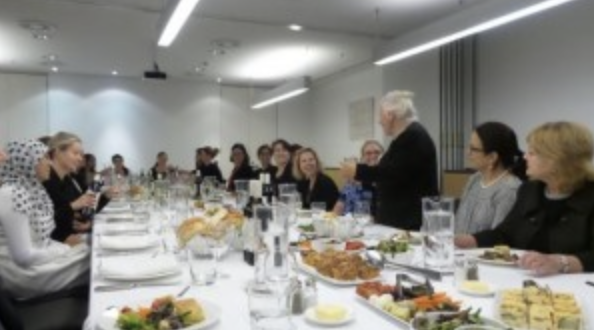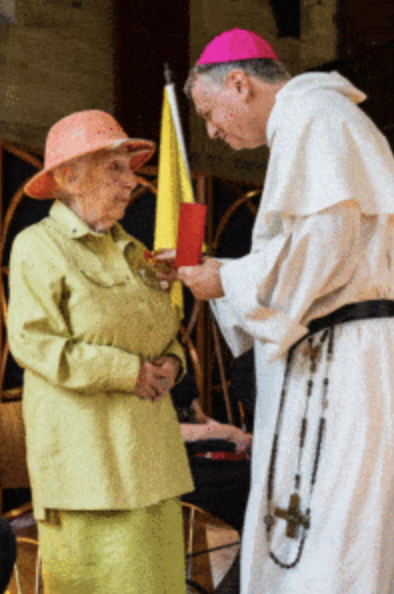
Janet Coombs died on Saturday 24 September aged 90.
Eighth Woman Admitted
Janet was admitted as a barrister on 13 March 1959 at the age of 27. Janet was the eighth woman to be admitted as a barrister in New South Wales. She practised mainly from 13 Selborne. Janet worked with Maurice Byers QC, Clive Evatt QC, Laurie Gruzman QC, and Jack Kenny QC. Hers was a general practice which included crime, media law and defamation, aboriginal land rights. Janet refused family law briefs.
Before and After
Janet Coombs’ predecessors as female barristers were Sybil Morrison (1924), Nerida Cohen (1935), Ann Bernard (1941), Beatrice Bateman (1942), Klara Rudlow (1953), Elizabeth Evatt (1955), and Kathleen Trevelyan (1957). Following Janet Coombs, the following women were admitted to the Bar: Helen Knox (1960); Susanne Schreiner (1962); Mary Cass (1963); Cecily Backhouse (1964); Anna Frenkel (1964); Helen Gerondis (1965); Margaret O’Toole (1965); Gertrude Gray (1968); Jenny Blackman (1968); Mary Gaudron (1968); Joan Palfreyman (1968); Jane Matthews 1969; Naida Haxton (1971); Francine Ruggero (1971); Pat Moore (1971); Pricilla Flemming (1971); Carmel Marlow 1972; and Margaret Beazley (1975).
Perhaps, Janet’s most persistent and devoted client was Gretel Pinniger (Madam Lash), whom Janet represented, in accordance with the cab rank rule, on numerous occasions in various legal escapades.
Longest Continually Practising Female Barrister in NSW
Janet Coombs, when she retired, was the longest continually practising female barrister in NSW, practising for nearly 40 years.
In the first three years of practice, Janet (and other women barristers) were precluded from attending the Bench & Bar Dinner as it was held at the Union Club where women were then unwelcome. Janet lobbied Nigel Bowen, then President of the Bar Association. The venue was changed to the Wentworth Hotel which welcomed women.
Hats
When I became an articled clerk in 1972 or 1973, Janet was a very visible person in Phillip Street, with her hats, flamboyant, colourful and varied. Janet was engaging. It was not difficult to strike up a conversation with her. Although Janet was a senior barrister at the time, she never had airs, and was always happy to chat.
Janet often took an afternoon nap on the floor of her chambers, a habit which provoked, on occasion, alarm by persons coming in to borrow a book, or on some other errand – to find Janet stretched out on the floor, oblivious to everything around her.

Feminist
The annual lunch for new female barristers of the Women Lawyers Association of New South Wales is named after Janet. There is a Janet Coombs Chambers. Janet was a feminist before many had heard of feminism, certainly before feminism was popular.
Janet’s feminism was practical rather than doctrinaire. It consisted in shouting lunch to newly admitted female barristers, allowing newly admitted female barristers to “squat” in her chambers (e.g. Mary Gaudron, later appointed a judge of the High Court), mentoring scores of newly admitted female barristers, always being a willing ear. Mary Gaudron, following her admission as a barrister, was initially not accepted on any floor of barristers, simply for being a woman. During the 1970’s Janet was a co-trustee of a room in Frederick Jordan Chambers made available at a subsidised rent for a year to a woman beginning practice at the Bar.
Janet Coombs was happy to help male, as well as female, barristers, anyone who needed a hand. What Janet did for other young struggling barristers was an expression of her open-heartedness.
Warmth
I remember, as a solicitor, briefing one of Janet’s brothers, John Coombs QC, a former President of the Bar Association, now also unfortunately deceased. We were in an intense conference about a difficult matter when Janet unexpectedly rang. Everything stopped while brother and sister chatted. Each–Janet and John–was a world apart in attitudes and opinions, in professional practice, but there was enormous warmth between them. Janet’s other brother, Jim Coombs, was a magistrate for many years.
Mother’s Daughter
Janet Coombs was the daughter of the famous HC (Nugget) Coombs, the first Governor of the Reserve Bank, a Keynesian economist, and important in Australian post-war political and economic history. Janet was born in 1932.
As a nine-year-old Janet lived with her family in Sir Owen Dixon’s house which was rented by the family while Sir Owen Dixon was High Commissioner to the United States. Young Janet started reading Sir Owen’s books, and decided she wanted to be a lawyer.
Janet completed Arts/Law degrees at the University of Sydney. She spent five years as an articled clerk with Remington & Co, solicitors.
I had the impression that Janet was very much her mother’s daughter, taking after her mother in many ways. Janet’s mother, Mary Alice (Lallie) Ross greatly influenced her daughter.
Enthusiastic Catholic
Janet was a fervent, indeed enthusiastic, Catholic, certainly, in the latter part of her life, a daily Mass-goer. In the 1960’s Janet obtained a qualification in canon law. For a time, Janet was President of the St Thomas More Society. She was one of the most long-standing members of the Council of the Society.
In 1995, as the Society celebrated its Golden Jubilee, Janet received the Pontifice et Ecclesia award for her long service to the Society. Janet loved the St Thomas More Society, and always wore the Pontifice et Ecclesia insignia at appropriate events.
Order of Holy Sepulchre
In 2010 Janet became a Dame of the Equestrian Order of the Holy Sepulchre of Jerusalem. The Order supports the Christian presence in the Holy Land, including schools and hospitals, open to all, no matter what their faith. The Order is an international body whose origins go back to the high middle ages.
In 2021, Janet was appointed a Dame of the Order of St Gregory the Great, in recognition of her charitable activities, an expression of her open-heartedness.
Shortly before she died, Janet was given the Last Rites by Archbishop Anthony Fisher OP.
Although Janet never married, she was alive to the needs of families, in particular, mothers and children.
Naked Female
Janet’s respect for others was evident in the mid 1970’s when the Council of the Bar Association hung in the Bar Common Room a painting of a near naked woman, according to some, masturbating. Apparently, the image had been painted from a depiction in a pornographic magazine.
One does not have to be a prude to understand Janet’s point. While there is a place for artistic presentation of the human body, the location and circumstances, amongst fully clothed, formally dressed portraits of elderly male lawyers, some in wigs and gowns, was demeaning to women, arguably intended to arouse eroticism. The location was a place to emphasise the role of the advocate representing his or her client–male and female, rich and poor, young and old, able and disabled, educated and uneducated, powerful and powerless. The location was appropriate to the role of the courts, according to each and everyone, without fear or favour, affection or ill-will, justice according to law. The Bar Common Room was an inappropriate location for such a painting. Janet, with others, urged removal of the painting.
Double Standards
As a means of making the point, Janet, in 1976, offered to donate a painting of a naked male, painted in the Matisse style. The Council of the Bar Association, in a display of double standards, rejected the offer of the painting of the naked male, claiming it lacked artistic merit.
The naked female was only removed in 1994 at the behest of then Bar Association President, Murray Tobias QC. There is owed an apology by all who were responsible for this demeaning of women, in reality, a demeaning of the human person. There were many at the Bar, both male and female, who agreed with Janet, but remained silent. What this episode illustrated was a culture, amongst some at the Bar, inimical, not only to women, but to the best traditions of the bar.
Janet came to the Bar when there were hardly any women barristers, and, by her endurance, made a way for other women barristers, who succeeded her. Janet retired in 1998, after almost fifty years of practice. Eventually, Janet was made a Life Member of the Bar Association. A portrait of Janet (“One of the Girls”) hangs in the Bar Common Room.

Fearless
Janet was fearless in pursuing the true and the good. Janet was outspoken, and, suffered for this. Yet Janet was forgiving, always warm, never bitter, always generous. Janet Coombsencompassed in her life a period in the history of the NSW Bar in which the Bar moved away from reluctant acceptance of female barristers, even, on occasion, deliberate demeaning of women. Janet was one of the pioneers who cleared the way for others to follow.
Full Story Yet to be Told
The full story of Janet Coombs is yet to be told. The National Library holds a four-hour interview with Janet to which unrestricted public access is yet to be had. There is a biography by Tim Rowse of Janet’s father, Nugget Coombs, which, unfortunately, deliberately avoids comment on his family life. For a rounded picture there need to be interviews with persons, still living, who knew Janet well, in particular solicitors who briefed her.
Suffice to say, Janet Coombs was a persistent advocate, not only for her clients, but also for women, in the best tradition of the Bar.
Michael McAuley
4 October 2022
